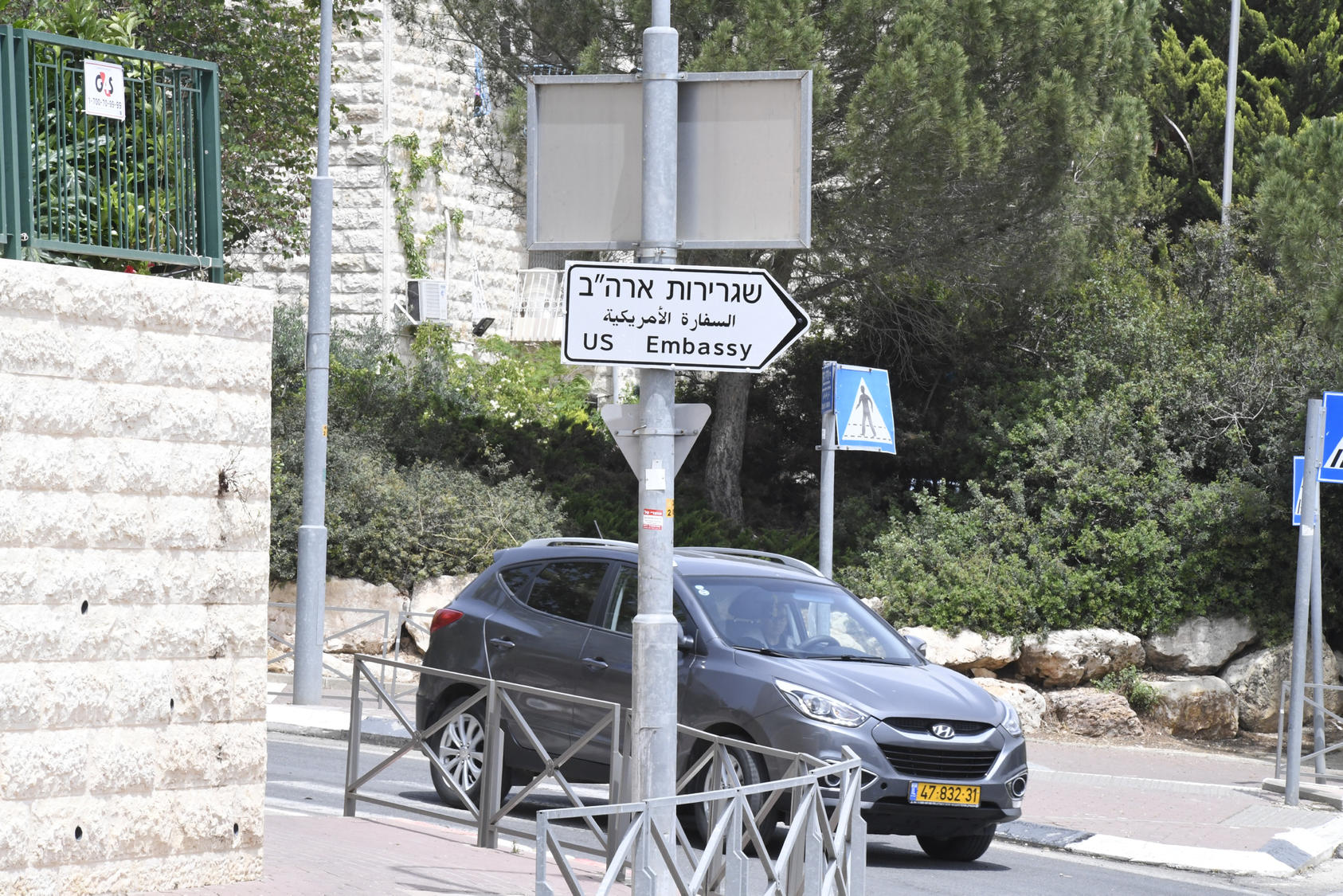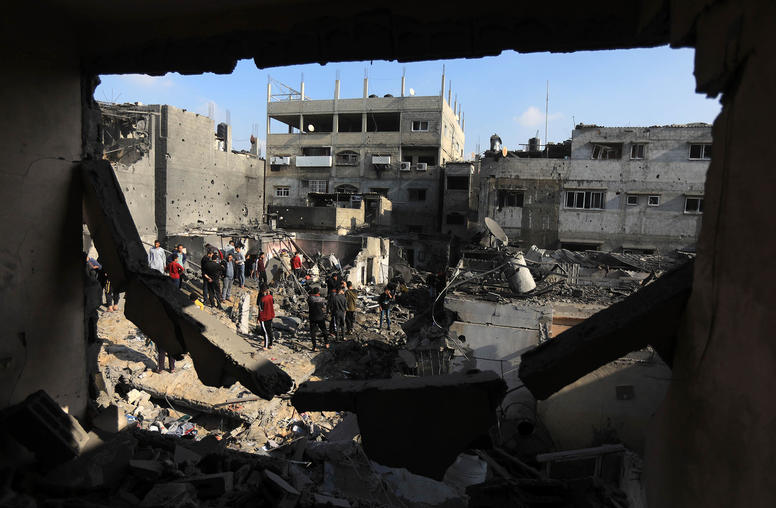Jerusalem, Gaza, and the Unclear Road to Peace
After another round of violence, is the peace process on a permanent freeze?
This week, a perfect storm of politics, mounting despair, and competing narratives of historic memory and grievances converged in Jerusalem and Gaza. The effects have been devastatingly deadly. The implications for Israeli-Palestinian peace are profound.

Embassy Promise Fulfilled
On May 14, the 70th anniversary of the founding of the State of Israel, the U.S. and Israel celebrated the formal move of the U.S. Embassy from Tel Aviv to Jerusalem. The move came six months after President Trump’s controversial announcement recognizing Jerusalem as Israel’s capital, and fulfilled a key campaign promise. This decision broke with decades of U.S. policy, and a virtual international consensus to defer adjudication of the city’s final status until it could be settled in the context of a negotiated agreement.
Since the December announcement, diplomatic efforts have floundered. President Abbas declared that the U.S. decision to only recognize Israel’s claim to Jerusalem has disqualified it as a credible third party and has refused to acquiesce to a solely U.S.-led process. His hopes for a multilateral framework aren’t likely to be met soon. The parties’ interests aside, the Europeans and Arab states are distracted with other priorities and have minimal appetite or bandwidth for assuming a more robust third-party role at this time.
For its part, the Trump administration affirms that it has not taken a position on final status negotiations, but simply given long overdue recognition to a reality. Yesterday’s White House statement on the embassy move even defined the recognition of Jerusalem as a “necessary condition” for progress and indicated that the step has “advanced peace between Israelis and Palestinians.”
Gaza Protests Exact Bloody Toll
Events transpiring less than 60 miles away in Gaza posed a near-term challenge to this assertion. Over the course of one day, up to 60 Palestinians were killed and thousands injured, as large-scale protests and stated intentions to breach the border fence with Israel were met with tear gas and live fire from the Israeli Defense Forces (IDF). Monday’s protests, and those that may yet follow this week, mark the culmination of the “Great Return March,” which began on March 30, and had already seen a death toll in the high 40s and thousands injured. Thousands of Gazans have been aiming to draw international attention to the economic and humanitarian plight of Gaza, while also demanding the right to return to lands they lost in 1948, now in present-day Israel. The protests were accordingly designed to culminate on May 15—the 70th anniversary of the date Palestinians commemorate as Nakba Day (their national “Day of Catastrophe”).
While the initiative began as an effort of politically independent nonviolent activists in partial response to the U.S. Embassy move, Hamas endorsed and co-opted the march. Specifically, it had been encouraging the activity closest to the border fence where thousands of unarmed and nonviolent protesters were also joined by those with explosives, stones, burning kites, and Molotov cocktails. In recent days, the head of Hamas in Gaza told journalists he would support “hundreds of thousands” of marchers breaking through the fence. Israel maintains its right to defend its border from this threat, despite the growing number of fatalities, and international condemnation and concerns regarding the proportionality of its military response.
In contrast to Gaza, West Bank protests—focused on the embassy move—remained relatively muted. PLO and Palestinian Authority (PA) leaders led some crowds in protest, and clashes with security forces occurred in major West Bank cities. However, the difference in scope and intensity seemed to underscore a growing divide in conditions and connection between the two Palestinian populations as the political split persists between Fatah-dominated PA in the West Bank and Gaza’s Hamas leadership.
The Uncertain Road Ahead
Against this backdrop the Israeli-Palestinian conflict—and the fate of its resolution—is in its most precarious state in decades. Prime Minister Netanyahu has increasingly demonstrated that he is willing to walk away from a 2009 commitment to a two-state solution, and members of his coalition openly reject that formula for peace.
For his part, President Abbas continues to articulate support for the concept of a two-state resolution. However, his recent use of rejectionist language, denying Jewish connection to the land and blaming Jews for the Holocaust, is garnering international opprobrium. This only reinforces an Israeli view, felt in mirror image by Palestinians, that there is no good faith partner with whom to make peace on the other side.
Amid such stagnation, the Trump administration has not endorsed the two-state solution, continuing to state that it will support whatever solution both parties can agree to. Its long awaited peace plan has yet to be revealed, and the space is being filled by leaks that only serve to fuel speculation and uncertainty.
In the present moment, the priority must be to literally stop the bleeding. Since Monday, things have calmed down, but the U.S., Israel, and Arab allies, must take a coordinated and urgent approach to affect sustained de-escalation at the border fence. Such de-escalation, if successful, will only endure if an equally coordinated approach is taken to vastly improve the desperate economic and humanitarian situation faced by Gazans. The White House already recognized the importance of this when it convened a multilateral stakeholder summit in March 2018. It must build on such an initiative to translate shared concern into action.
Coordination will have its challenges, however. Given that the U.S. will not deal directly with Hamas, improving conditions on the ground in Gaza will necessitate working with and through the PA, who did not show up for the White House summit and continues to boycott engagement with the U.S. in response to the embassy move. Working through allies may also not be smooth sailing. Relations between the U.S. and key European allies are straining, with countries like France and the UK parting ways with the U.S. in strongly condemning both the embassy move, and Israel’s response to the Gaza protests.
The Trump administration does not solely own the broken peace process. That responsibility is shared with the parties themselves, successive U.S. administrations, and the broader international community. It is true that Israeli and Palestinian leaders have repeatedly failed to prepare their publics for the uncomfortable truths and painful compromises peace will require, and a third party willing to push both Israelis and Palestinians in that direction could open the door to progress. However, by moving the embassy to Jerusalem, thereby adjudicating a core issue of the conflict in favor of one party (Israel), the administration has set back its ability to serve as an effective broker and advance a diplomatic process in the near term.
The challenge now for all parties lies in the lessons this conflict has long imparted, and Monday’s events in Gaza evinced: Absent forward movement and a political horizon, attitudes will harden, despair will grow, and the likelihood of violence will increase. Following the embassy move, steps from the U.S. that not only stabilize the situation and advance tangible benefits on the ground, but also acknowledge and act upon legitimate interests and aspirations of the Palestinians might serve to mitigate this setback and set the administration on a clearer path toward its stated goal of “achieving a a lasting and comprehensive peace agreement.”



